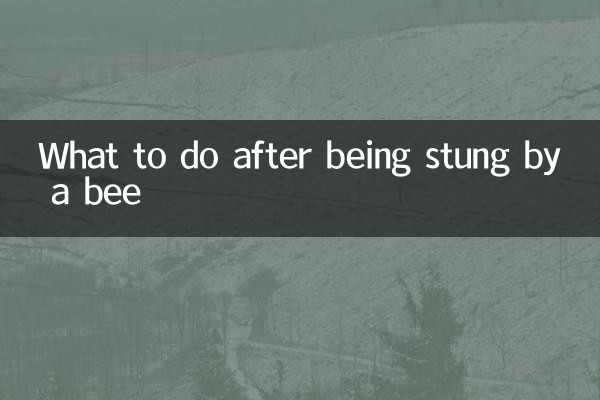What to do after being stung by a bee
Summer is the season when bees are active, and bees stings often occur. If left untreated, it can cause allergic reactions or even serious health problems. This article will combine the hot topics and hot content on the Internet in the past 10 days to give you a detailed introduction to the correct treatment methods after being stung by bees, and provide structured data for reference.
1. Symptoms after being stung by a bee

After being stung by a bee, the following symptoms usually appear:
| Symptom type | Specific performance | Severity |
|---|---|---|
| local reaction | redness, pain, burning sensation | Mild |
| allergic reaction | Itching, hives, and difficulty breathing all over the body | Moderate |
| severe allergies | Drop in blood pressure, shock, confusion | Severe |
2. Emergency treatment steps after being stung by a bee
1.Remove bee sting: Bee stings usually remain in the skin and need to be scraped off gently with a credit card or blunt blade to avoid squeezing the venom sac.
2.Clean the wound: Wash the sting area thoroughly with soap and water to reduce the risk of infection.
3.Cold compress to reduce swelling: Apply ice pack or cold towel to the wound for 10-15 minutes each time to relieve pain and swelling.
4.Apply medicine: Antihistamine ointment or hydrocortisone ointment can be used to reduce inflammation, and oral antihistamines (such as loratadine) can relieve allergy symptoms.
5.Observe reaction: Pay close attention to whether allergic reactions occur, such as difficulty breathing, dizziness, etc., and seek medical attention immediately.
3. Situations requiring medical treatment
The following situations require immediate medical attention:
| Condition | Processing method |
|---|---|
| The sting site is in the mouth or throat | Seek medical attention immediately to prevent respiratory obstruction |
| Systemic allergic reaction occurs | Call emergency services and use an epinephrine auto-injector (if available) |
| Being stung multiple times (more than 10 times) | Hospital observation is required to prevent accumulation of toxins |
4. Measures to prevent bee stings
1.Avoid attracting bees: Do not use strong-scented perfume or skin care products, and avoid wearing bright clothes.
2.keep Calm: When you encounter bees, don’t wave them away, just leave slowly.
3.Pay attention to the environment: When outdoors, avoid being near flowers or beehives.
4.Carry a first aid kit: People who are allergic to bees should carry an epinephrine auto-injector with them.
5. Data statistics on hot topics across the entire network
According to the entire network data in the past 10 days, the discussion on "bee stings" mainly focuses on the following aspects:
| topic | Discussion popularity (index) | main focus |
|---|---|---|
| How to treat bee stings | 8500 | First aid procedures, home remedies |
| Treatment of allergic reactions | 7200 | Adrenaline use, hospital treatment |
| Precautions | 6500 | Outdoor activity safety, child protection |
6. Summary
Although bee stings are common, it is important to treat them correctly. Mild stings can be relieved with home care, but allergic reactions or multiple stings require immediate medical attention. The spread of preventive measures and first aid knowledge can effectively reduce the risk of bee stings. I hope this article can provide you with practical help!

check the details

check the details